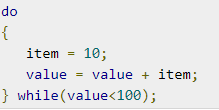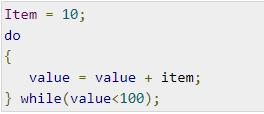ompiler optimization is important in computing, as it enhances the performance and operation of executable computer programs. The process of optimization may involve either the minimization or maximization of certain attributes or aspects of the execution process. The essence of compiler optimization is to hasten the execution process by minimizing the processing time, reducing memory usage, and ensuring minimal energy consumption or requirements. There are various techniques of compiler optimization, which can be selected and utilized depending on various factors, such as the programming language used and system design. Nevertheless, optimization techniques vary significantly depending on their applications. Object code optimization, which is one of the most basic optimization techniques, involves the transformation of a computer program for improved time efficiency, which is achieved through the minimization of the number of execution loops.
The compilation process involves the conversion of programs from a seemingly complicated form into a different design suitable and efficient for a particular computing environment. Developers and compiler writers face the challenge of serving or attending two seemingly contradicting needs, which culminates in a dilemma, as they have to produce designs needed for an enhanced computing experience. First, compiler writers face the challenge of new developments and the emergence of increasingly complex computer software programs. Second, they face difficulties arising due to the rising demand for large and complex, yet less costly programs, usually designed to serve emerging user needs. Nevertheless, new knowledge about compiler optimization continues to emerge and evolve. Particularly, object optimization is an effective technique for analyzing and transforming source codes meant for use with Fortran H programs. In essence, this particular object code optimizer has proven to be an effective solution to the dilemma facing computer programmers and hardware designers.
The Fortran H technique is a novel optimizer used to compute “dominance” relationships by indicating which lines of code should be executed first. This compiler optimization tool exhibits the capacity to determine the order of execution of statements. It facilitates the elimination of common codes or expressions throughout the program. The most effective loop structure needed to ease and hasten the program execution process is determined. However, the compiler does not make distinctions between arising address calculations, especially those resulting from subscripts and various other expressions. An equally important aspect of the Fortran H compiler optimization is its capability to trace data flow in the case of subscripted variables. As such, this optimizer is considerably powerful because it simplifies the execution process by reducing the size of code and facilitates data tracing. It requires little to no intervention from the programmer but still functions with optimal efficiency and effectiveness.
The Fortran H compiler optimizer performs a thorough analysis of source codes and produces an efficient object code that serves the desired purpose with increased efficiency and speed. It is among the most reliable optimizers, as it does not return incidents of bugs or failed processes. Particularly, Fortran H produces perfect codes for small and medium loops with fewer expressions. However, the compiler optimization process can stall in case of restrictions on data types or problems in the structural organization of the source code. These challenges cause difficulties in the compiler in the course of combining subprograms within the single process. In essence, the optimizer does not compensate for problems arising due to inefficiencies in source codes unless they are minor. Nevertheless, the technique applies in most procedural languages, although it might be ineffective for interpretive systems and source codes derived from pre-coded libraries and subroutines.
The object code optimization by Fortran H compiler occurs in a unique manner. The arithmetic translator transforms the Fortran H expression into a set of three addresses expressed in the form of text. It then builds “connection lists,” which describe the available forward paths for the program. Importantly, the connection lists are sorted to create both a forward and backward flow path. The next step involves the computation of dominance relations between the connection lists, which provide the information needed for the identification of loops and initialization blocks. The compiler optimization further continues the process by initiating a scan to detect subscripted variables; a process helps to determine whether particular variables are busy or available for reassignment. The essence is to establish at what point the variables will contain values to be fetched in subsequent processes. At this point, the compiler is ready to examine the program code in anticipation of the optimization operation.
The compiler continues to examine the statements for possible optimizations, a process that starts from the innermost loops outwards. This does not stop until it has been established whether the optimization is necessary. Common expressions are eliminated, and loop-in-dependent expressions discarded. The immediate step involves the identification of induction variables and their multiplications reduced to additions through the induction of new variables. The compiler may then attempt to reorder various computations to create additional constant expressions, which may be removed from the loops. Once all loops have undergone the machine-independent optimization process, a similar process is initiated for the register allocation loops. Some registers are assigned local usage, and others are designated for single variables in the loop. This helps in avoiding memory reference to registers within the loop. Importantly, the compiler sets status bits to signify the bases, variables, and index quantities to be loaded into registers or stored for various text entries.
Setting status bits is an entirely independent process that requires some attention. The essence of status bits is to ensure that memory locations are pre-set to hold various quantities, such as variables and index quantities, which must be stored for each data entry. However, it should be possible to determine the amount of object code generated for each text entry. Hence, the branch address should be computable within the context of the status bit setting process. The object code can then be generated from the entered text, which should retain a consistent format throughout the optimization process, although status bits and register numbers are usually pre-set memory allocation. The object code optimization can be illustrated using a simple code snippet, as shown in Images 1 and 2. The code in Image 2, as it is the result of object code optimization, does not only involve lesser CPU cycles but also uses lesser memory space because it does not involve repeated processing of the identifier item.


In overview, object code optimization using the Fortran H compiler guarantees speedy execution of code, economical usage of memory, and reduced power consumption. This optimization technique involves taking in the object code from a particular language compiler, which becomes the source code for Fortran H, and converting it into an algorithmically more efficient object code. Parts of the initial code are transformed without necessarily involving the CPU registers and other absolute memory locations. However, the execution process is shortened through the combination of similar and related processes in loops.